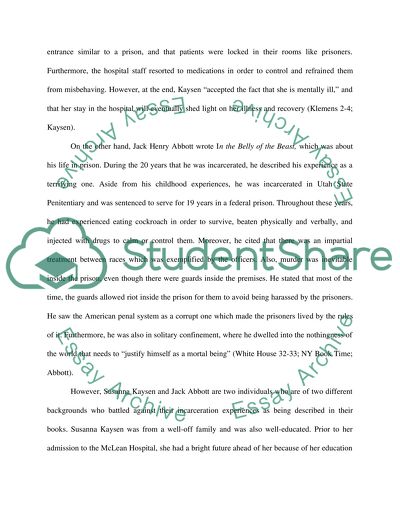Cite this document
(“Incarceration in the Views of Kaysen and Abbott Essay”, n.d.)
Retrieved from https://studentshare.org/english/1459368-academic-essay-comparison-on-incarceration
Retrieved from https://studentshare.org/english/1459368-academic-essay-comparison-on-incarceration
(Incarceration in the Views of Kaysen and Abbott Essay)
https://studentshare.org/english/1459368-academic-essay-comparison-on-incarceration.
https://studentshare.org/english/1459368-academic-essay-comparison-on-incarceration.
“Incarceration in the Views of Kaysen and Abbott Essay”, n.d. https://studentshare.org/english/1459368-academic-essay-comparison-on-incarceration.


